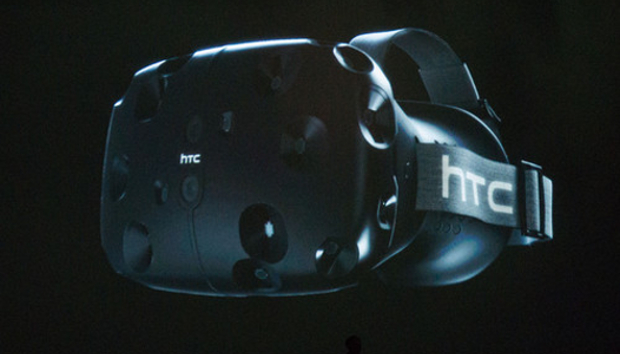 When I tried HTC’s Vive back in December I became a total VR convert. More than a headset like the Oculus Rift or Samsung Galaxy Gear VR (or Sony Morpheus, come to think of it) the Vive is a system. The combination of headset, controllers and, most important, two wall sensor mean the Vive can make the most of your physical space, throwing up a grid-like warning when you are about to run out of room. At the time, Oculus was promising a vague price point of ‘more than $350’ but it set a reasonable benchmark for expectations. The HTC spokesperson I met with said that price point was ‘very competitive’ but wouldn’t be drawn any further.
When I tried HTC’s Vive back in December I became a total VR convert. More than a headset like the Oculus Rift or Samsung Galaxy Gear VR (or Sony Morpheus, come to think of it) the Vive is a system. The combination of headset, controllers and, most important, two wall sensor mean the Vive can make the most of your physical space, throwing up a grid-like warning when you are about to run out of room. At the time, Oculus was promising a vague price point of ‘more than $350’ but it set a reasonable benchmark for expectations. The HTC spokesperson I met with said that price point was ‘very competitive’ but wouldn’t be drawn any further.
Like any emerging technology, VR would cost you but it wouldn’t be that painful. The Rift’s eventual US pre-order price of $599/€699 proved factually correct but also put it out of the reach of many early adopters and even forced Oculus co-founder Palmer Luckey to take to Reddit and apologise for setting expectations so low. The reason? Apparently competitors were circulating rumours that the Rift would cost $1,500. Makes sense… sort of.
In any case the issue of price when it comes to VR is a sticky subject. Samsung’s Gear VR – which requires a smartphone or phablet – will be bundled free with pre-orders of the Galaxy S7 and S7 Edge smartphones through Carphone Warehouse and costs only €100 off the shelf. At a more basic level, Google’s Cardboard viewer – which also requires a smartphone – start at $20 and there are plenty of styles to choose from thanks to a ‘works with Google Cardboard’ certification. If you’re feeling handy you can even build your own for the price of a few lenses, a piece of cardboard and some velcro. Contrast this with the Vive at the high end of the spectrum.
When HTC announced US pre-orders for the Vive at a price point of $799 (ex sales tax) I considered it a fair enough deal given it has more to offer out of the box than its competitors. However, when I read today of the price point of €899 (incl. VAT) I have to push my chair back and say ‘that’s it. I’m done’.
Rule of first generations
There are two reasons why I’m stepping away from VR early adopter status, the first I’ll call the ‘rule of first generations’ inspired by Apple. As we found with the iPhone, the expression of an idea, design philosophy or even integration of a feature gaining purchase elsewhere in the market only happens every other generation of iPhone. The original model didn’t have 3G connectivity, the iPhone 4 had antennagate, the iPhone 5 didn’t have NFC or 4G connectivity, the iPhone 6 lacks touch authentication – with each version the design is refined, issues of feature lag resolved just enough to create a need.
Not all of the current crop of VR products suffer from this. Arguably, Gear VR and Cardboard succeed at leveraging mobile technologies through modest apps based on field of vision instead of interaction. The Rift, however, will be an incomplete product when it comes to market as an Xbox controller will be bundled with the headset instead of a pair of hand controllers.
The second reason I’m going to pass on the Vive and Rift for the moment comes down to their primary functions: content. When the Vive is released there will be four applications bundled with it, none from the Steam online gaming store it has partnered with. The Rift, at least, will come with the latest EVE Online title but one game does not make a library and the €1,400 investment in a headset/rig upgrade demands more than one game and the promise of more to come.
The comparisons with the iPhone might seem generous but aren’t misplaced. I still see VR as the future of computing but that also means that expensive first gen devices will give way to more refined, cheaper editions, and – just as the App Store was central to the iPhone’s success – better applications from third party developers.
So for the moment I won’t be smashing open the glass jar marked ‘VR FTW’ I have by my bedside. Now to see what Sony can come up with for the PS4.








Subscribers 0
Fans 0
Followers 0
Followers